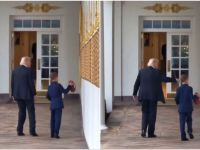Winter is coming in Afghanistan, and unlike the ill-fated Red Army that ground to a halt in the craggy peaks of this Central Asian country, the US is planning to roll on using hi-tech weaponry.
"I think our forces are going to have less trouble with winter than the Russians," John Pike of Globalsecurity.org, an independent defense-policy analysis institute, has told the Kanasas City Star in an in-depth look at the war. "This isn't going to be like Korea. You're not going to see pictures of a lot of American trucks stuck in the snow."
Winters are brutal in Afghanistan, and snow usually covers much of the center and north of the country, arriving in blizzards, according to the BBC Online.
In the mountains, temperatures can fall to -40C. The snow drifts to two or three meters deep, points out the UK-based news service, adding that with a wind chill of -40C, a wind of just 15mph can take the temperature down to -65C - in which exposed flesh freezes in less than 30 seconds.
Despite such horrors, the US-led forces are ready to take to the mountains and skies using modern technology as their shield and sword.
BEATING THE CHILL
Heat-seeking weapons are the first force the Western allies plan to harness. According to reports by USA Today and Reuters, the US air force two years ago began using a targeting system called TAWS, or Target Acquisition Weather Software. The program uses changes in temperature to lock on to targets – and is all the more effective, say experts, when the heat of the day turns to the chill of night, or scorching summers are transformed into freezing winter. Under the colder conditions, the heat sources – including the engines of enemy vehicles, for example - stand out more strongly for the targeting system.
The software is not limited to warplanes, according to reports, and is also now featured on tanks. Analysts believe TAWS would give the US-led forces an edge in any combat on Afghanistan’s frozen terrain.
The advantages of hi-tech equipment would also be apparent in air operations in general, according to the Star report. High winds or blizzards would present problems for any ground operation, says the paper, but using satellite navigation, US planes and helicopters could thread their way through the stormy weather.
Aircraft and satellites could detect structures and vehicles through cloud cover - a capability that could frustrate attempts by the Taliban to regroup, says the report, which adds that any significant gathering of vehicles would be a potential target for a hit-and-run raid or a bomb.
Meanwhile, any US soldier unfortunate enough to be deployed in the snowy wastes would benefit from a whole bag of tricks devised by the Pentagon. These, according to Reuters and USA Today, include several layers of specially-designed clothing, snow goggles, and a range of hand-held weapons of every size.
TALIBAN FROZEN OUT?
The Taliban militia, now in shambles and retreating from all of its strongholds, has several times announced plans to retreat into the mountains and fight a guerilla war.
Under such conditions, analysts have pointed out, the fundamentalist fighters will benefit from a detailed knowledge of the terrain, and experience with Afghan winters.
But others point out that the Taliban forces have limited supplies in comparison with their well-armed enemies.
"The Taliban are fighting a come-as-you-are war," Pike told the Star. "They have all the bullets they're ever going to have.”
Meanwhile, the TAWS system is poised to seek out heat emerging from bunkers and caves. And upon emerging into the winter weather, says the BBC, "The effects [of freezing weather] on soldiers include increased time to perform tasks, reduced dexterity and accuracy, reduced grip strength, and failure to achieve adequate concentration on the task at hand.”
With two sides facing off under such extreme conditions, and using such wildly different weapons, the stage will be set in Afghanistan for a contest between hi-tech warriors and their skilled but under-equipped foes – Albawaba.com
© 2001 Al Bawaba (www.albawaba.com)







